

The world's biggest aircraft has lifted off from the ground in Britain for the first time - but it will not be ready to leave the hangar where it is being developed until next year.
The Airlander, which is a cross between an airship and an aeroplane, was originally developed as part of a US Army project but was scrapped by military bosses.
It is now being converted to provide business and leisure flights in a hangar in Cardington, Bedfordshire - and recently took off for the first time.
The vessel was filled with 1.3million cubic feet of helium - enough to fill 15 Olympic-sized swimming pools - so it could float above the ground.
It was then attached to four fork-lift trucks, each with a two-tonne block of cement to stop it being carried away, and driven the entire length of the hangar.
In its new position nearer the doors of the hangar, the £80million aircraft will be fitted with its engine, fins and 'mission module' ahead of its first proper flight in early 2016.
At 300ft, the Airlander is the largest aircraft in the world, bigger even than the Airbus A380 - but would be dwarfed by the historic zeppelins developed in Germany during the 1930s.
It is a hybrid of an aeroplane and an airship - 60 per cent of its lift comes from the helium it is filled with while the other 40 per cent comes from its wings.
It will be able to stay in the air for two weeks at a time, cruising at more than 90mph, and travel at heights of up to 20,000ft with a 10-tonne cargo.
Some have hailed the Airlander as the future of air travel because, unlike conventional aeroplanes, it emits little pollution and is not noisy enough to disturb people on the ground.
It can take off and land vertically like a helicopter, which means it does not need a long runway to operate.
British firm Hybrid Air Vehicles was originally one of the contractors developing the vessel for the US Army under a $500million programme which was scrapped in 2012.
The company then bought the rights to develop the Airlander for commercial use - including as a passenger aircraft which will carry 48 people at a time.
The vessel will also offer business services such as coastguard duties, military and civil surveillance, filming and academic research. Engineers are hoping eventually to launch a sleeper service which could travel overnight between major cities for business customers.
Among the wealthy figures backing the project is Iron Maiden lead singer Bruce Dickinson, who has invested around £250,000 in the Airlander.
In its military incarnation, the aircraft previously embarked on a test flight in New Jersey, but the lift-off on October 31 was the first time the civilian version had left the ground.
Mike Durham, technical director at Hybrid Air Vehicles, said: 'Seeing the Airlander come to life and floating was simply breath-taking. This is a key moment for the UK's aerospace industry in getting this unique aircraft ready for flight.'
The Airlander's power comes from four 350hp, four-litre V8 diesel engines - two mounted at the front and two at the back.
With a length of 302ft, a width of 143ft and a height of 85ft, it is officially the world's largest aircraft - the biggest passenger plane, the Airbus A380, is only 240ft long.
However, the Hindenburg - the German zeppelin that crashed in New Jersey in 1937 with the loss of 35 lives - was three times longer than the Airlander.
Its new base at Cardington is the historic home of the Royal Airship Works, set up in 1919 to build R101 airships in a failed attempt to damage German dominance of the industry.
 |
Day|Week

 118-meter-high Never-used Building in NW. China Demolished
118-meter-high Never-used Building in NW. China Demolished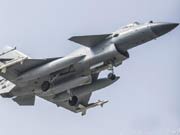 J-10B fighters with homegrown engine in test flight
J-10B fighters with homegrown engine in test flight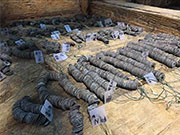 10 tons of copper coins unearthed in 2,000 years old ancient tomb
10 tons of copper coins unearthed in 2,000 years old ancient tomb Beautiful graduate from police college becomes Internet hit
Beautiful graduate from police college becomes Internet hit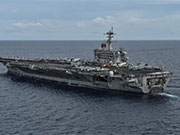 Photos of U.S. Navy intruding in South China Sea released
Photos of U.S. Navy intruding in South China Sea released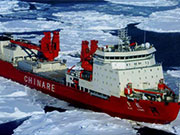 What is inside China's icebreaker ‘Xuelong’?
What is inside China's icebreaker ‘Xuelong’? Chinese, U.S. navies hold first-ever joint exercise in the Atlantic
Chinese, U.S. navies hold first-ever joint exercise in the Atlantic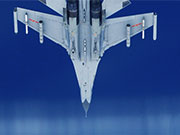 In pics: skies of glory
In pics: skies of glory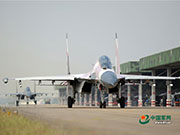 J-10, J-11, Sukhoi Su-30 fighters vs. HQ-9 anti-aircraft missile system
J-10, J-11, Sukhoi Su-30 fighters vs. HQ-9 anti-aircraft missile system Russian plane crash victims sucked out of seats as 'external impact' blew jet apart
Russian plane crash victims sucked out of seats as 'external impact' blew jet apart